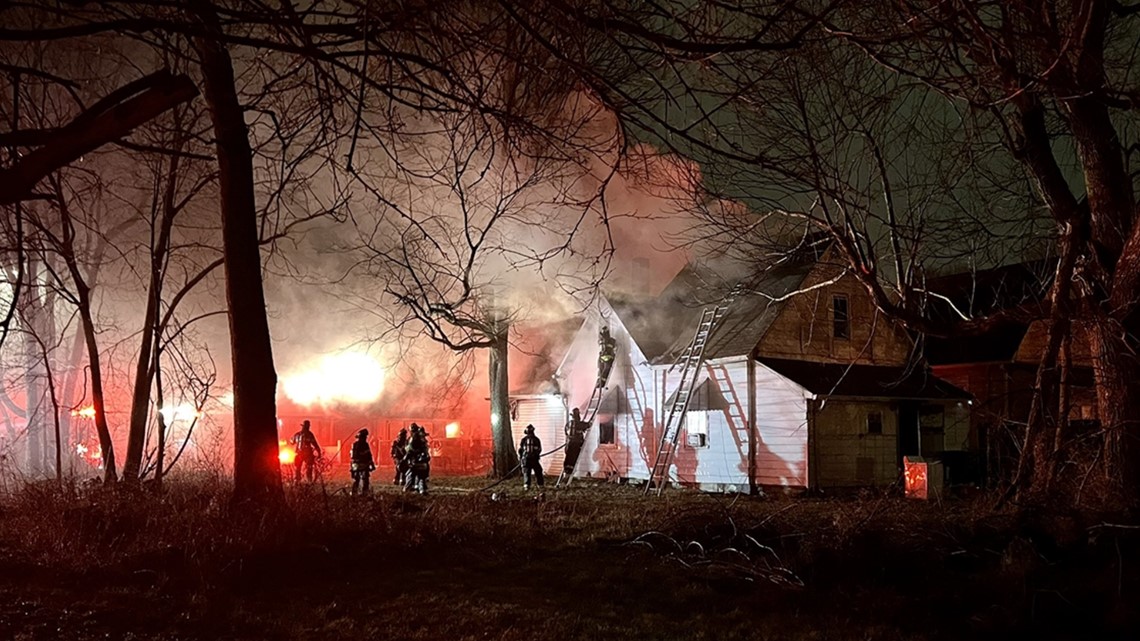Topic
Understanding the Importance of Receo vs in Emergency Response

Introduction
When the flames of a fire rage out of control, every second counts. In the chaos of an emergency response, having a well-defined strategy can make all the difference between life and death. That’s where RECEO VS comes into play – a tactical approach that outlines the critical steps for firefighters to follow in order to effectively combat fires and save lives. Join us as we delve into the world of emergency response tactics and explore the importance of RECEO VS in ensuring a swift and coordinated firefighting effort.
Fireground Tactical Priorities: RECEO VS
When it comes to emergency response on the fire ground, having a clear set of priorities is crucial. One commonly used method is RECEO VS, which stands for Rescue, Exposure, Confine, Extinguish, Overhaul and Ventilate, Salvage. This approach provides a structured framework for tackling fires effectively.
Rescue is always the top priority in any emergency situation. Ensuring the safety and well-being of individuals caught in dangerous situations should always come first. Exposure involves protecting surrounding structures from the spread of fire or other hazards.
Confine focuses on containing the fire to prevent further damage or escalation. Extinguish is about putting out the flames using appropriate techniques and equipment. Overhaul and ventilate are essential steps in ensuring that all potential sources of re-ignition are eliminated.
Salvage involves minimizing property damage and preserving as much as possible during and after firefighting efforts. By following these tactical priorities in order, responders can work efficiently towards resolving emergencies with minimal risk and optimal outcomes.
Step-by-step explanation of the “Rescue, Exposure, Confine, Extinguish, Overhaul and Ventilate, Salvage” fire-attack method
When it comes to tackling fires, having a methodical approach is key. The “Rescue, Exposure, Confine, Extinguish, Overhaul and Ventilate, Salvage” fire-attack method provides a structured way to address different aspects of firefighting.
First up is rescue – ensuring the safety of individuals caught in the fire. Next is exposure – protecting surrounding structures from damage. Confinement follows, focusing on containing the fire’s spread. Then comes extinguishment – putting out the flames using appropriate techniques.
Overhaul involves thoroughly checking for hidden embers or hot spots that could reignite the fire. Ventilating clears out smoke and harmful gases post-firefighting efforts. Salvage aims to minimize property damage by salvaging valuable items from further harm.
Each step plays a crucial role in effective firefighting and ensuring overall safety for both occupants and responders alike.
RECEO-VS
When it comes to handling emergencies, having a structured approach is key. That’s where the RECEO-VS method comes into play. This acronym stands for Rescue, Exposure, Confine, Extinguish, Overhaul and Ventilate, Salvage – outlining the priorities in fireground tactical operations.
Each step plays a crucial role in ensuring an effective response to emergency situations. From rescuing individuals in danger to salvaging property post-incident, each aspect of RECEO-VS is carefully planned out to maximize efficiency and safety.
By following this systematic approach, first responders can tackle emergencies with precision and effectiveness. The RECEO-VS model provides a roadmap for prioritizing tasks and coordinating efforts in high-stress situations.
Incorporating RECEO-VS into emergency response protocols helps teams stay organized and focused during critical moments. It serves as a valuable framework for executing swift and coordinated actions when every second counts.
COAL WAS WEALTH
In the world of firefighting, the acronym COAL WAS WEALTH holds significant meaning. Each letter represents a crucial step in ensuring effective emergency response and fireground management.
“C” stands for Command, emphasizing the importance of establishing clear leadership and communication during crisis situations. Without proper command structure, chaos can easily ensue.
“O” signifies Origin and Cause determination, highlighting the essential task of investigating how and where the fire started. Understanding these factors is key to preventing future incidents.
“A” refers to Alarm, stressing the swift activation of emergency response systems to ensure rapid assistance when needed most. Early detection can make all the difference in mitigating damages.
“L” denotes Location and Extent assessment, underlining the necessity of accurately assessing both where the fire is located and how far it has spread. This information guides strategic decision-making on-site.
With each element playing a vital role in effective emergency response strategies, embracing the principles embodied within COAL WAS WEALTH can lead to more efficient outcomes when faced with challenging scenarios on or off duty.
Rethinking RECEO VS
As emergency response tactics evolve, it’s crucial to reassess traditional approaches like RECEO VS. While this method has long been a staple in firefighting, some experts argue that it may need re-evaluation in today’s dynamic environment. The changing nature of fires and emergencies calls for flexibility and adaptability in our strategies.
Rethinking RECEO VS involves considering alternative models that prioritize different aspects of the response process. By exploring new perspectives and techniques, we can enhance our effectiveness in mitigating emergencies. It’s essential to remain open-minded and willing to embrace innovation when evaluating established practices.
Incorporating modern insights and technologies into emergency response frameworks can lead to more efficient and comprehensive outcomes. As we navigate the complexities of emergency situations, constant reflection on our methods is key to staying ahead of challenges. Let’s continue to rethink and refine our approach towards ensuring safety for all.
SLICERS vs RECEO-VS: Which Is Better?
When it comes to fireground tactical priorities, the debate between SLICERS and RECEO-VS has been a topic of discussion among emergency responders. Some argue that SLICERS – Size-up, Locate the Fire, Identify and Control the Flow Path, Cool from a Safe Distance, Extinguish – offers a more modern approach to firefighting tactics.
On the other hand, RECEO-VS – Rescue, Exposure, Confine fire spread, Extinguish the fire with water or foam application Overhaul and Ventilate as needed for safety measures Salvage property – follows a more traditional method that has been tried and tested over time. Both models have their own set of advantages and disadvantages depending on the specific situation at hand.
Whether SLICERS or RECEO-VS is better may vary based on factors such as training protocols, department preferences, and individual experiences in emergency response scenarios. The key lies in understanding both models thoroughly to adapt and apply them effectively when called upon during an emergency.
The SLICERS model priorities
When it comes to emergency response, the SLICERS model priorities offer a unique approach.
Size-up is the first step, emphasizing the importance of gathering information before taking action.
Locate and identify are crucial aspects that help responders understand the situation fully.
Isolate and control focus on containing the incident to prevent further escalation.
Cooling from a safe distance helps to reduce heat levels and limit fire spread.
Extinguish efficiently using tactics tailored to the specific circumstances at hand.
Rescue remains a top priority throughout, ensuring human life is safeguarded above all else.
Advantages and disadvantages
When it comes to the debate between SLICERS and RECEO-VS in emergency response, each model has its own set of advantages and disadvantages.
On one hand, the SLICERS model emphasizes safety as a top priority by focusing on size-up, ventilation, search and rescue. This approach ensures that firefighters are less likely to be caught in dangerous situations during a fire incident.
However, some may argue that the traditional RECEO-VS method provides a more structured approach by prioritizing key steps such as rescue, exposure, confine, extinguish, overhaul and ventilate. This systematic process can help ensure that all necessary actions are taken in a timely manner to effectively combat the fire.
In terms of efficiency and effectiveness during firefighting operations, both models have their strengths and weaknesses. It ultimately depends on the specific circumstances of each emergency situation as to which approach may be more suitable for successful outcomes.
The RECEO-VS model priorities
When it comes to emergency response, the RECEO-VS model is a crucial framework that guides firefighters in effectively managing fire incidents.
Rescue stands at the forefront of this approach, emphasizing the importance of saving lives as a top priority.
Exposure control follows, focusing on protecting nearby structures and preventing further damage.
Confine involves containing the fire to limit its spread and prevent escalation.
Extinguish is where firefighters work tirelessly to suppress and eliminate the flames, bringing the situation under control.
Overhaul and Ventilate address post-fire procedures like checking for hot spots and improving air quality within the affected area.
Salvage wraps up the process by safeguarding belongings and restoring order after the chaos.
Conclusion
In the world of emergency response, understanding the importance of RECEO VS is crucial for effective and efficient firefighting. The step-by-step approach of Rescue, Exposure, Confine, Extinguish, Overhaul and Ventilate, Salvage provides a structured method to tackle fires safely.
While the COAL WAS WEALTH acronym offers a mnemonic device for remembering fireground tactical priorities, rethinking RECEO VS through the SLICERS model presents a modern perspective on firefighting strategies. Both models have their advantages and disadvantages, but ultimately it is up to each firefighting team to determine which approach works best for their specific situation.
By exploring the differences between SLICERS vs RECEO-VS, firefighters can adapt their tactics to better meet the demands of today’s evolving fire service landscape. Whether prioritizing speed or safety first, being well-versed in these methodologies allows responders to make informed decisions that can save lives and protect property in times of crisis.
Embracing the principles of RECEO VS while also considering alternative approaches like SLICERS enhances our ability to effectively combat fires and safeguard our communities. By continuously evaluating and refining our strategies based on new insights and experiences, we can ensure that our emergency response efforts remain strong and resilient in the face of ever-changing challenges.
Topic
Simple Appearance Upgrades That Lift Your Mood

The way we present ourselves plays a significant role in how we feel day to day. Our appearance reflects our personality and impacts our confidence, self-esteem, and mood. When we feel good about how we look, it can influence our posture, social interactions, and even our motivation levels. Boosting your mood through appearance doesn’t have to involve drastic changes or costly makeovers. Simple upgrades, easily incorporated into your daily routine or wardrobe, can make a profound difference. From refreshing your hairstyle to reorganizing your closet, small improvements can foster positivity and a greater sense of self-worth.

Update Your Hairstyle for a Fresh Start
One of the quickest and most effective ways to feel renewed is by changing your hairstyle. Whether it’s a trim, a new color, or a completely different cut, a hairstyle shift can dramatically alter how you view yourself in the mirror. Hair has emotional power. It represents change, reinvention, and control. Visiting a trusted stylist can be a self-care ritual that boosts mental well-being. Even simpler changes like trying a new part, adding texture, or styling with a fresh accessory can lift your look and your spirits. When your reflection feels more aligned with how you want to feel, your confidence naturally improves.
Enhance Your Skincare Routine
Taking care of your skin is one of the simplest ways to boost your confidence and lift your mood. A consistent skincare routine tailored to your needs can improve your complexion’s health and glow, making you feel refreshed and radiant every day. Beyond cleansers and moisturizers, some choose to enhance their natural beauty with subtle cosmetic options like lip fillers. When done thoughtfully, experts from https://drscottallison.com.au/lip-filler/ explain, lip fillers can add gentle volume and definition, creating a youthful and balanced look that complements your appearance. This small enhancement often provides a positive emotional boost, helping you feel more confident and comfortable in your skin.
Reorganize and Refresh Your Wardrobe
Our clothes are more than just fabric; they’re an extension of our identity. Sorting through your wardrobe to eliminate items that no longer fit, feel comfortable, or match your style can be a surprisingly freeing experience. By curating a closet of pieces you love and feel great in, you create a daily opportunity to start the morning on a positive note. Consider introducing a few new staples, such as a flattering jacket, a pair of well-fitted jeans, or a vibrant scarf, to inject life into your outfits. Even color choice affects mood; wearing bright or soothing hues can uplift your emotional state and communicate energy or calmness to those around you.
Accessorize with Intention
Accessories can transform an otherwise plain outfit and provide a sense of uniqueness and polish. Choosing items that reflect your personality, such as statement earrings, a favorite watch, or a meaningful necklace, can offer a boost of joy every time you put them on. Accessories allow you to express creativity without changing your entire wardrobe. Even something as simple as a new handbag, belt, or pair of sunglasses can spark a sense of excitement. Intentional accessorizing helps you feel more put-together and can serve as a small yet impactful mood elevator, particularly when you receive compliments or notice your sparkle in a mirror.
Upgrade Your Posture and Body Language
While not an external item like clothing or makeup, your posture and body language significantly influence your appearance and how you feel. Standing tall, walking with purpose, and maintaining an open, relaxed posture can project confidence and positively impact your mood. Simple posture improvements, such as pulling back your shoulders or keeping your chin up, can create the psychological feedback loop of feeling stronger and more in control. Practicing yoga, stretching, or using a posture-correcting aid can support long-term improvement in how you carry yourself. This improves your presence and reinforces an internal feeling of well-being and empowerment.
Introduce a Signature Scent
Scent is a powerful trigger for emotions and memories. Wearing a fragrance that you love can become a mood-lifting ritual, setting the tone for your day. Whether it’s a light floral perfume, a fresh citrus body spray, or a calming essential oil blend, a pleasing scent can provide comfort and confidence. Choosing a signature scent adds a layer of intentionality to your appearance, giving you something special that’s uniquely yours. It’s a subtle yet sensory upgrade that can make you feel more refined, energized, or relaxed, depending on the aroma you choose. Simply put, smelling good can make you feel good, and others will notice it, too.

Feeling good about how you look doesn’t require an extreme makeover or a high-end wardrobe. Simple, thoughtful appearance upgrades can yield big returns in how you feel emotionally and mentally. Whether it’s through grooming habits, wardrobe updates, posture improvements, or scent selection, taking control of your presentation is an empowering way to nurture your inner well-being. By incorporating a few small changes, you can elevate your appearance and your outlook on life.
Topic
How Emergency Standby Power Keeps Critical Systems Running During Outages

Power outages can strike without warning, disrupting homes, businesses, and critical infrastructure. Whether caused by storms, equipment failure, grid overload, or maintenance issues, these outages can lead to substantial financial losses, safety hazards, and operational setbacks. For facilities that rely heavily on continuous electrical power, such as hospitals, data centers, manufacturing plants, and emergency response centers, losing electricity for even a few seconds can have severe consequences.
Emergency standby power systems provide a lifeline in these situations. Designed to automatically supply electricity when the primary power source fails, these systems ensure that important equipment and services remain operational. They prevent business disruption and protect lives, data, and assets in environments where downtime is simply not an option.

The Role of Standby Generators in Power Continuity
At the heart of most emergency standby power systems is a standby generator. These generators are designed to automatically start when an outage is detected and provide power until utility service is restored. Unlike portable generators that require manual activation and limited capacity, standby generators are permanently installed and integrated into a building’s electrical system.
They are typically fueled by diesel, natural gas, or propane, and are capable of powering entire facilities or designated circuits depending on the system design. When properly sized and maintained, standby generators can run for hours, or even days, without interruption.
What makes them truly valuable is their ability to engage automatically and seamlessly. The moment a disruption is sensed, the system reacts within seconds to restore power, ensuring minimal downtime and no manual intervention during a crisis.
Why Transfer Switches Are Important
A critical component of any standby power system is the transfer switch. This device detects a failure in the utility power and shifts the electrical load to the generator. Once utility power is restored, the switch transfers the load back, allowing the generator to shut down safely. Facilities looking to streamline this process often search for automatic transfer switches for sale to upgrade their emergency systems with faster and more reliable switching capabilities. These switches are crucial in maintaining uninterrupted service in high-stakes environments like healthcare facilities or emergency response centers.
Automatic transfer switches work by constantly monitoring voltage from the utility line. When a drop or loss is detected, the switch initiates generator startup and transitions power to the standby source. Once normal service resumes, the switch completes the transfer back and signals the generator to cool down and shut off. This sequence happens without human input, eliminating delays and reducing risk.
Applications That Depend on Standby Power
While most buildings benefit from some level of backup power, certain sectors absolutely require it. Hospitals and healthcare clinics use standby systems to keep life-saving equipment functioning during grid failures. Critical functions such as ventilators, monitors, electronic records, and surgical instruments cannot afford even brief interruptions.
Data centers depend on uninterrupted power to prevent data corruption, service downtime, and network instability. Many modern business operations, from e-commerce to cloud storage, rely on real-time data availability and uptime guarantees. For these organizations, power continuity is not a luxury, it’s a contractual and operational requirement.
Manufacturing plants use standby power to keep machinery running and protect sensitive production lines from abrupt halts that can cause quality issues or equipment damage. Cold storage facilities use it to preserve inventory, while communication centers use it to maintain connections during emergencies.
System Design and Customization
The effectiveness of a standby power solution depends heavily on how well it’s designed for the specific needs of the facility. A thorough assessment is necessary to determine which systems and circuits require backup, how much power is needed, and what kind of generator and transfer switch will best serve the environment.
Some facilities require whole-building coverage, while others may only need to power critical systems like emergency lighting, refrigeration, or IT infrastructure. The size and fuel source of the generator must align with usage patterns and runtime expectations. The location of the generator must meet ventilation, accessibility, and noise regulations.
Customization ensures efficiency and cost-effectiveness. Over-sizing a system leads to unnecessary expenses, while under-sizing can result in power failures during high-demand periods. Professional installation and consultation are key to ensuring that the standby system performs reliably when it’s needed most.
Maintenance and Testing
Installing an emergency standby power system is only the first step. Ongoing maintenance and periodic testing are key to ensure the system will operate correctly in the event of an outage. Generators should be inspected regularly for fuel levels, oil quality, battery charge, and coolant condition. Transfer switches should be tested to confirm proper functionality and response times.
Most industry standards recommend monthly testing, including full-load tests under simulated outage conditions. This verifies that the generator will start and sustain the load and exercises the system to keep components in working condition.
Failing to maintain the system increases the risk of failure during a real emergency. Scheduled inspections, service contracts, and record-keeping contribute to the longevity and dependability of the equipment.
Compliance and Regulatory Considerations
Standby power systems must comply with national and local codes when used in regulated industries. Healthcare facilities are subject to guidelines from organizations such as the National Fire Protection Association (NFPA), which mandates testing intervals, load requirements, and installation protocols.
Building codes may dictate where and how equipment can be installed, particularly in terms of noise levels, emissions, and proximity to flammable materials. Non-compliance can lead to fines, delays in permitting, or insurance complications.
Businesses should work with knowledgeable installers and consultants who understand these regulations and can design systems that meet both operational and legal standards.
Future Trends in Standby Power
Technology in the standby power space continues to evolve. Hybrid systems that integrate battery storage with traditional generators are gaining traction for their ability to bridge the gap between power loss and generator startup. Smart monitoring systems now allow for real-time diagnostics, remote testing, and predictive maintenance.
Sustainability is becoming a greater focus. Advances in clean energy generators, such as those powered by hydrogen or renewable biodiesel, offer environmentally responsible alternatives without compromising reliability.
As demand for uninterrupted service grows, so does the innovation around how we provide and manage backup power. These advancements promise greater efficiency, faster response, and reduced environmental impact, all while keeping critical systems online during power disruptions.

Emergency standby power is more than a safety net, it’s an operational necessity for many industries. By providing immediate, reliable power during outages, these systems prevent costly downtime, protect crucial functions, and ensure business continuity when it matters most. Through careful planning, proper equipment selection, and regular maintenance, businesses can safeguard their infrastructure and people against the risks of power failure. Whether it’s for healthcare, data protection, manufacturing, or public safety, a well-designed standby system is one of the smartest investments an organization can make.
Topic
Dealing with a Persistent Pest Issue? Here’s What You Need to Do

There is only one thing worse than discovering a pest infestation in your home, and that’s discovering that the pest Pest Issue infestation is still there after you have already taken pest control measures.
By their nature, pests are resilient. If they found a good breeding ground in your home, they will come back, especially if the pest control method you used to get rid of them wasn’t thorough enough.
That doesn’t mean you have to despair. If you have a recurring pest infestation, here are a few important steps you can take to make your property critter-free once and for all.
Hire a Professional Exterminator

If you’ve been trying to manage your pest issues on your own, it’s time to hire a professional exterminator. For persistent pest infestations, DIY solutions or products that you can buy at the local hardware store usually aren’t strong enough to make a difference.
Look for exterminators that are proven to provide lasting solutions to pest control issues. The team at North Fulton Pest Solutions, for instance, has been serving the Atlanta area for more than 50 years, which means they have plenty of experience with all kinds of infestations. Look for positive reviews or ask your neighbors for recommendations.
For persistent pest infestations, you may need multiple visits from an exterminator. Talk with the professionals you hire and make sure that they are transparent about their plans and how much it will cost.
Get Rid of Their Habitats

When pests keep coming back to a home, usually it’s because they found something there that they like. Go through your home and property to find potential habitats and sources of food that may be attracting pests. A professional exterminator can also help you analyze your property to find potential pest breeding grounds.
Throw out any clutter such as old newspapers, junk, or garbage bags, especially in out-of-the-way spaces like crawlspaces and attics. Clutter provides pests with a nesting ground. It can even be a source of food.
Standing water is another attraction for pests, especially mosquitoes and other bugs. Get rid of pools or places where puddles form when it rains. Go over your plumbing to find any hidden leaks that may be attracting pests.
Make Sure They Can’t Come In
There’s no point in making your home unwelcoming to pests if you’re unwittingly inviting them in. Go over your home and identify places where pests can get inside, such as cracks, open windows, or crawlspaces.
Seal off any potential entrance points for pests. That way, once you redo your pest control treatment, they won’t be able to come back.
Finding Pest Control Solutions That Last
Persistent pest infestations are the nightmare of every homeowner, but you can manage them with the right help. Make sure that your home is inhospitable to pests by getting rid of their habitats, food sources, and points of entry. That way, you can prevent future infestations.
To get rid of persistent infestations, you need help from a professional exterminator. They can provide treatments that remove long-lasting pest colonies and advise you on ways to prevent future infestations. It may take multiple visits, but a good exterminator will help you get rid of pests once and for all.

 Cartoon1 year ago
Cartoon1 year agoUnlocking the Potential of Nekopoi.care: A Comprehensive Guide

 Game1 year ago
Game1 year agoExploring Aopickleballthietke.com: Your Ultimate Pickleball Destination

 BUSINESS1 year ago
BUSINESS1 year agoWhat Companies Are In The Consumer Services Field

 BUSINESS1 year ago
BUSINESS1 year agoUnraveling the Mystery of 405 Howard Street San Francisco charge on Credit Card

 HOME IMPROVEMENT1 year ago
HOME IMPROVEMENT1 year agoVtrahe vs. Other Platforms: Which One Reigns Supreme?

 TECHNOLOGY1 year ago
TECHNOLOGY1 year agoThe Guide to Using Anon Vault for Secure Data Storage

 ENTERTAINMENT11 months ago
ENTERTAINMENT11 months agoUnderstanding Bunkr Album: A Comprehensive Guide

 ENTERTAINMENT1 year ago
ENTERTAINMENT1 year agoThe Epic Return: Revenge of the Iron-Blooded Sword Hound
















